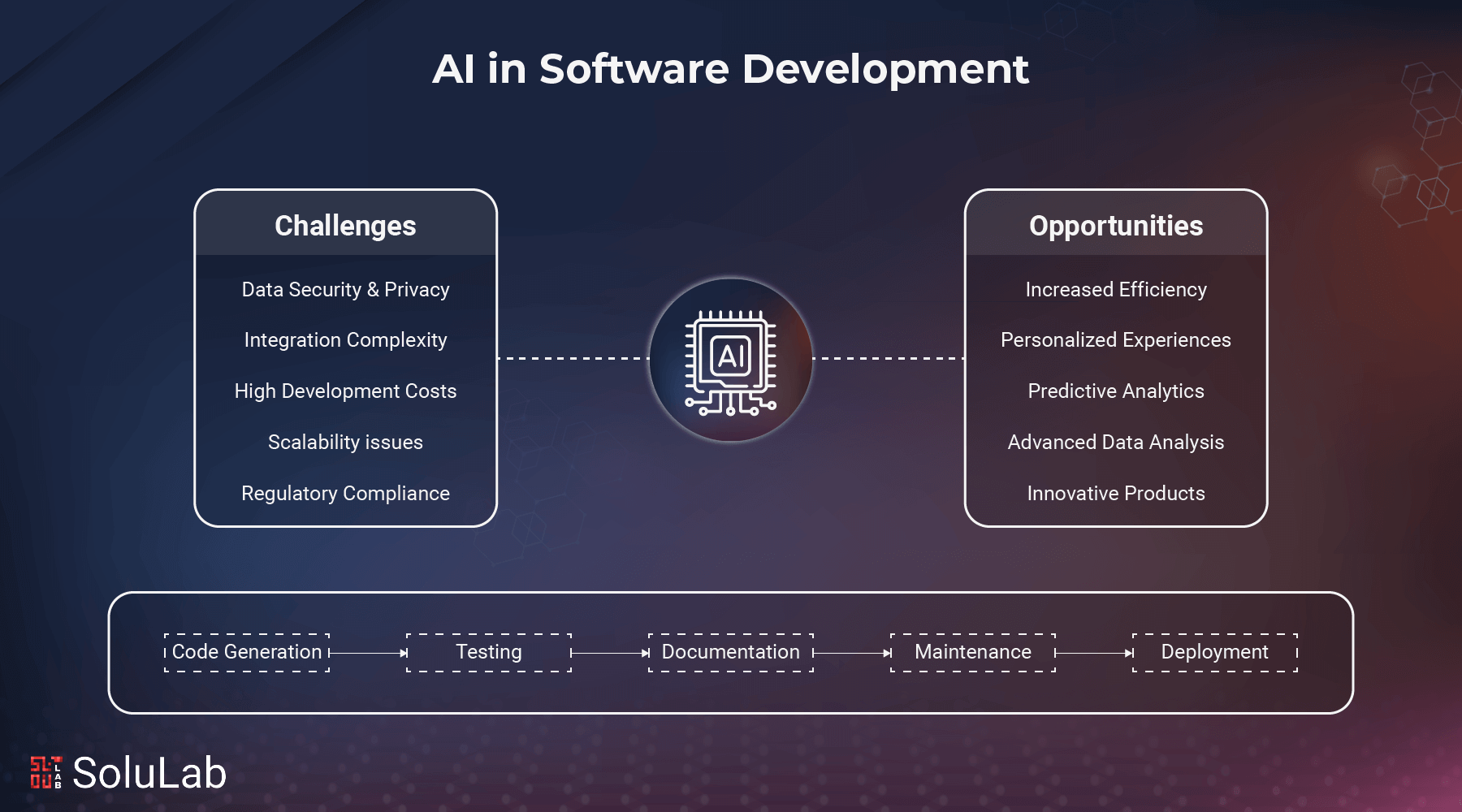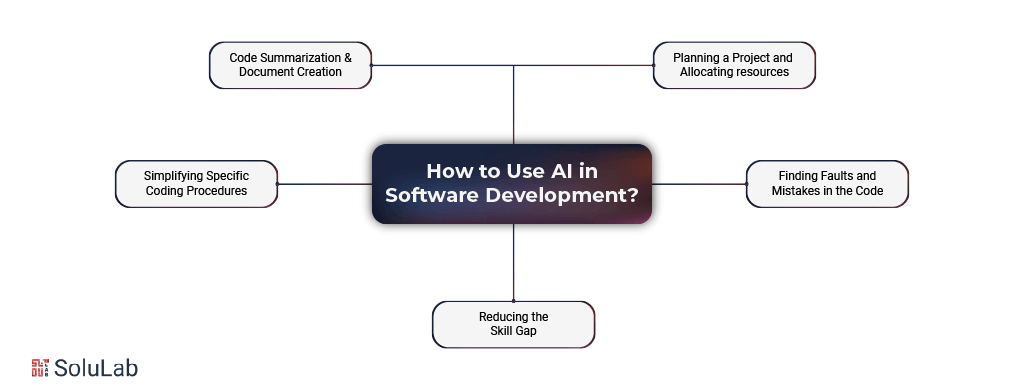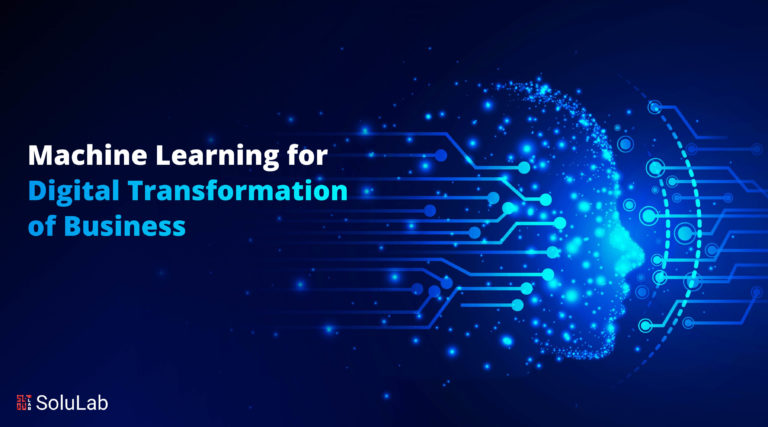
It’s difficult to overlook AI’s rise, regardless of whether you’ve used ChatGPT once or regularly utilized automated tools. View research projects that between 2023 and 2030, the worldwide artificial intelligence market will expand by 37.3%. Additionally, software development using AI will receive some of the highest investment of any industry.
By automating activities, improving code quality, and speeding testing, AI is changing software development. In the 2024 Stack Overflow Developer Survey, nearly 80% of developers said AI solutions significantly increased productivity.
Software engineering will undoubtedly use artificial intelligence (AI) in the future, therefore IT leaders must stay ahead of the curve to remain competitive. We’ll highlight possibilities and factors to take into account when integrating AI into software development to help you hone your AI approach.
Will AI Replace Software Engineers?
AI is unlikely to replace software engineers shortly. While AI can automate certain coding tasks, its capabilities are still limited in terms of creativity, complex problem-solving, and decision-making, which are core skills of human developers. AI is, however, the software development process.
According to reports, 70% of software engineers believe AI-powered coding tools boost productivity and speed up task completion. Rather than replacing developers, AI will serve as a valuable tool to enhance their efficiency, allowing engineers to focus on higher-level tasks like system architecture, innovation, and solving complex challenges.
How will AI Impact the Developer Experience?
Developing software Teams will design, build, document, distribute, and debug software differently with AI. Developers might employ AI to mediate between stakeholders, customers, and coworkers. AI accelerates feature additions, issue repairs, and support requests.
Some major factors caused these changes:
- Platform thinking will replace design for developers. Previously, developers wrote outcome-oriented design code. AI engineers will now focus on goal-oriented platform design.
- AI will help with basic UI design and leave complicated interactive design to humans. AI creates pages and flows, then designers construct a UI to navigate them.
- AI will provide continual delivery. Agile teams can use AI to write plenty of code and draft PRs for review. Developers can improve delivery speed with AI to make it feel more continuous.
- Teams must create architecture to test AI code from all angles as it produces more code. Test architects will evaluate end-to-end functionality and build regression tests as needed.
Opportunities for AI Software Development
Automation offers growth and hazards to your operations. To fully comprehend its effects, we’ll discuss its pros and downsides. Here’s what generative AI can do:
Prompt engineers can use AI to improve software development processes, but not all. Prompt engineers create AI inputs to achieve results. Teams can use prompt engineering for such tasks:
1. Increased Efficiency: By incorporating artificial intelligence, software helps to do tasks that were previously done by hand, increasing efficiency.
2. Personalized User Experiences: As AI software analyzes user data and enhances the degree of interaction with the program, advanced personalization is made possible.
3. Predictive analytics: By employing analytical and adaptive data processing, they also offer estimates and projections to boost the likelihood of forecasting.
4. Advanced Data Analysis: AI programs can also analyze amounts of data annotation, which is crucial for business intelligence and innovation.
5. Innovative Product Development: From recommendation engines to automated personal assistants, AI software development services aid in the creation of inefficient new products and solutions.
6. Enhanced Accuracy: AI systems discover abnormalities, minimize errors, and increase precision in tasks like picture recognition and natural language processing.
7. Scalability: In order to have optimal capabilities, AI solutions might be designed to be flexible as data and user counts grow.
8. Cost Savings: By implementing intelligent cloud computing, corporate organizations can reduce their costs in areas such as data management and customer interactions by utilizing automation-driven efficiency.
9. Competitive Advantage: As a result, AI technology can give a company a competitive edge by fostering innovation and introducing goods and services that set it apart from the competition.
10. Enhanced Security: AI-driven systems can improve cybersecurity through efficient threat identification, threat appraisal, and prompt responses to potential intrusions. This is made possible by the tremendous advancements in artificial intelligence.
Challenges of AI Software Development
The main obstacles in AI software development services are as follows:
- Data security and privacy: Protecting the data used in AI models is crucial since any misuse or leak of the data can have serious legal repercussions and damage the model’s reputation.
- Data Quantity and Quality: Feed data is essential for AI algorithms and needs to be both abundant and of excellent quality. By giving inaccurate information, the data’s bias or weakness may directly harm the overall forecasts and results.
- Complexity of Integration: Most of the time, integrating new AI solutions into existing systems requires intricate structural adjustments, which may also include redesigning a number of processes and structures.
- High Development Costs: Because general AI solutions are sophisticated, their establishment and integration can occasionally be expensive due to the requirement for professional hire and consultation, the purchase of processing capacity, and aftercare.
- Problems with Scalability: It could be challenging to expand the system such that it won’t lag or lose accuracy as AI apps grow in size in terms of data and the number of users interacting with them.
- Ethical and Bias Issues: As a result, some AI systems replicate biases found in training materials or even data sets, making them inherently unjust.
- Lack of Talent: Organizations struggle to find and recruit the best talent to develop AI software because of the high demand for workers with AI skills.
- Regulatory Compliance: It can be very expensive and time-consuming to adjust to and attempt to comply with unclear and ever-changing laws governing the use of AI, data, and privacy.
- Model Interpretability: Since the majority of AI systems in use today, particularly deep learning networks, are considered “black boxes,” it is impossible to explain how they make their judgments.
- Upkeep and Updates: Since AI models need to be retrained to account for newer datasets and situations, they must be maintained and updated over time.
How to Use AI in Software Development?

Making the most of the tools at your disposal requires knowing when and how to use AI. In the upcoming years, we’ll discuss the most promising prospects for using AI in software development.
1. Code Summarization and Document Creation
Code reviews and manual inspections are typically the first steps in quality assurance and control. However, by automating your testing procedure, AI can enhance software evaluations. Long chunks of text can be condensed into shorter ones once the coding has been improved. Later on, it will be simpler to interpret and modify this succinct rewrite.
Even though AI isn’t, the highest level of code coverage is ensured when combined with manual testing. To determine the optimal answer, AI may also perform A/B testing on two software versions. AI can provide programmers with documentation once testing is complete. This aids teams in identifying the underlying source of problems or discrepancies in their work.
2. Simplifying Specific Coding Procedures
Coding procedures can be and projects can be completed more quickly with the use of automated technologies. In contrast to complete code generation, these technologies can:
- Provide specific lines of code as suggestions.
- Make minor adjustments in real time.
- Add statements to comply with the specifications of the coding language.
With the help of these tools, developers may concentrate on the artistic aspects of coding. AI assists them in carrying out their strategic judgments on the operation of a program. Developers can also learn new things in real time with the aid of this approach.
3. Finding Faults and Mistakes in the code
Among the most widely used AI technologies in software development are automated debugging programs. Developers can identify problems by hand, but AI can speed up the process by identifying and correcting mistakes instantaneously. Based on the information in your database, several programs can even forecast errors in the future.
AI can save hours of debugging, even though it can’t always identify intricate problems or organizational preferences.
4. Planning a Project and Allocating Resources
Careful planning and budgeting are necessary for successful project deliveries. AI can analyze previous work, compile information on the resources you have been given, and suggest new initiatives. Determining if an endeavor is worthwhile can also be aided by this preparation.
AI can forecast results after you’ve allocated your resources. In particular, automated platforms make use of this information to update:
- Project milestones and timeline
- Planning for resources and the budget
- Project scope
- Workflows
- Roles and responsibilities assigned
5. Reducing the Skills Gap
Software development requires experience, which leads to skill gaps and prevents cross-team contributions. Non-developers can participate in development because of AI code-creation technologies. Additionally, less seasoned team members will have access to a tool that aids in completing challenging assignments. With the help of this additional resource, developers can take on increasingly challenging projects and advance their careers.
How to Mitigate the Risks of AI in Software Development?

Artificial intelligence carries some concerns. Inaccurate outputs can be produced by even the best-automated tools. For the foreseeable future, human approval will be necessary for AI-generated work. Other risks include:
1. Examine Particular Use Cases
Don’t think of AI as a universally applicable answer. Rather, identify use cases for which you can develop specialized AI tools.
2. Invest In Risk Management
To make sure your AI in risk management satisfies data compliance and security standards, you must establish security review controls. After that, ask your staff to create protections so they can respond to any problems promptly.
3. Reorganize Teams According To Skill Shifts
As more teams adopt AI, consider how your staff can adapt to it. To get the best of both worlds, make sure your human staff analyzes AI-generated work for anything from SEO to code reviews.
4. Train Your Developers And Non-Developers:
Generative AI is capable of handling code generation. This reduces the risks associated with AI-generated code and raises AI tech knowledge across departments.
Industries Examples of AI Software Development
Artificial intelligence software development has transformed industries.
1. Banking & Finance
As previously discussed, banks and the AI in the finance industry are utilizing AI to detect fraud, resulting in a significant reduction in the number of unlawful transactions.
2. Supply Chain and Logistics
Artificial intelligence has altered the AI agents in supply chain and logistics industries by improving route planning, inventory management, and demand forecasting. This has resulted in lower costs, more efficiency, and higher customer satisfaction.
3. Retail and E-commerce
AI agents in Retail and E-commerce are used to personalize customer experiences, optimize pricing tactics, and improve inventory management. It provides a more customized experience, which boosts both sales and client loyalty.
4. Automotive Engineering
Artificial intelligence has had a big impact on autonomous vehicles, as well as predictive maintenance and the manufacturing process.
5. Insurance, Healthcare, And Pharmaceuticals
Artificial intelligence in insurance has helped to streamline claim processing and risk assessment. AI helps with diagnostic processes, patient care management, drug discovery, and overall efficiency and outcome improvement in healthcare.
6. Customer Service and Complaint Management
AI-powered chatbots and automated response systems have transformed customer service by delivering prompt, efficient, and 24-hour support, resulting in much higher customer satisfaction.
7. E-Learning:
The future of AI in education includes more adaptive learning platforms and AI-assisted curriculum development, which could transform how education is given and experienced. AI in e-learning provides tailored learning experiences by customizing content to individual learning. It also gives automated grading and feedback, which improves the learning experience. For example, a dancing video generator allows users to animate their photos and get everyone moving. This is a strategy to save time when preparing to teach the most recent dance moves.
Conclusion
As a tech leader today, you must be aware of the impact of AI in the software industry and what it means for you and your organization. Acknowledge that technology is here to stay and is not a passing ‘trend,’ thus your company must embrace it to remain competitive.
Invest in and use the technologies that are most appropriate for your organization. Engage your development and product teams. Are there any technologies that can assist them in their work and become more efficient? Then, work toward their execution. Use low- and no-code tools to grow your SaaS firm! These tools enable firms to swiftly bring their minimal viable products (MVP) to market, validate their ideas, and gather user feedback.
SoluLab helped Digital Quest improve customer engagement by developing an AI-powered chatbot tailored for travel recommendations. Using Generative AI, the chatbot delivers personalized suggestions, and reservations, and collects user feedback for continuous improvement. With multi-language support and 24/7 availability, it ensures exceptional service and global reach. SoluLab, an AI development company, can transform your business with expert solutions—contact us today!
FAQs
1. What are the key opportunities for using AI in software development?
AI can automate repetitive tasks, improve code quality, accelerate testing, enhance user experiences, and assist in predictive analytics, driving efficiency and innovation in software development.
2. How does AI improve software testing and quality assurance?
AI-powered tools can automate testing, detect bugs early, predict potential failures, and optimize test cases, ensuring better software quality and reducing human errors.
3. What challenges do developers face when integrating AI into software development?
Common challenges include data privacy concerns, lack of AI expertise, high costs of AI implementation, and the complexity of integrating AI models into existing software systems.
4. Can AI help with automating code generation?
Yes, AI can automate code generation by using models to analyze requirements and generate code snippets or entire functions, speeding up development and reducing manual coding efforts.
5. How does AI assist in software design and architecture?
AI can analyze existing systems and suggest optimal software AI in architectures, helping developers design scalable, efficient systems and make data-driven decisions throughout the design process.






